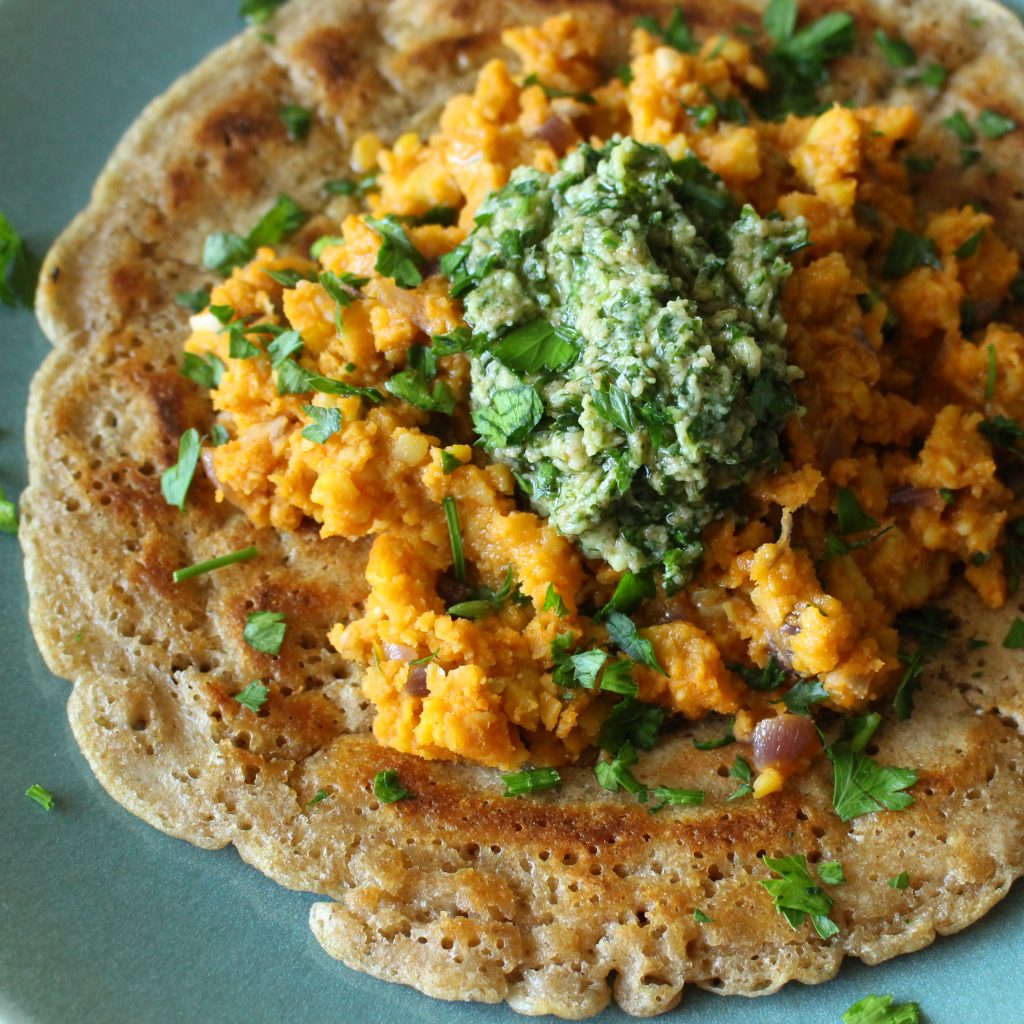
Sourdough pancakes are simple, delicious and can be made and enjoyed in so many ways.
You can eat them sweet and crispy for a continental style breakfast.
You can cook them soft, fill them with beans and roll them up.
You can add spices to the batter and use them like tacos, filling with salad, fish, chicken and sauce.
And the sourdough pancakes are super-easy: You don’t have to have eggs or milk. You don’t need a certain type of flour. And, as you’ll see, you don’t even need a sourdough starter.
My favourite sourdough pancake is made with spelt and chestnut flour. I love topping it with miso and linseed, drizzling a little olive and then folding it in half and tucking in! My son likes wholegrain spelt with a little mashed banana added to the batter. My hubby has rye flour and tops it with butter which melts in to little rivers over the warm surface.
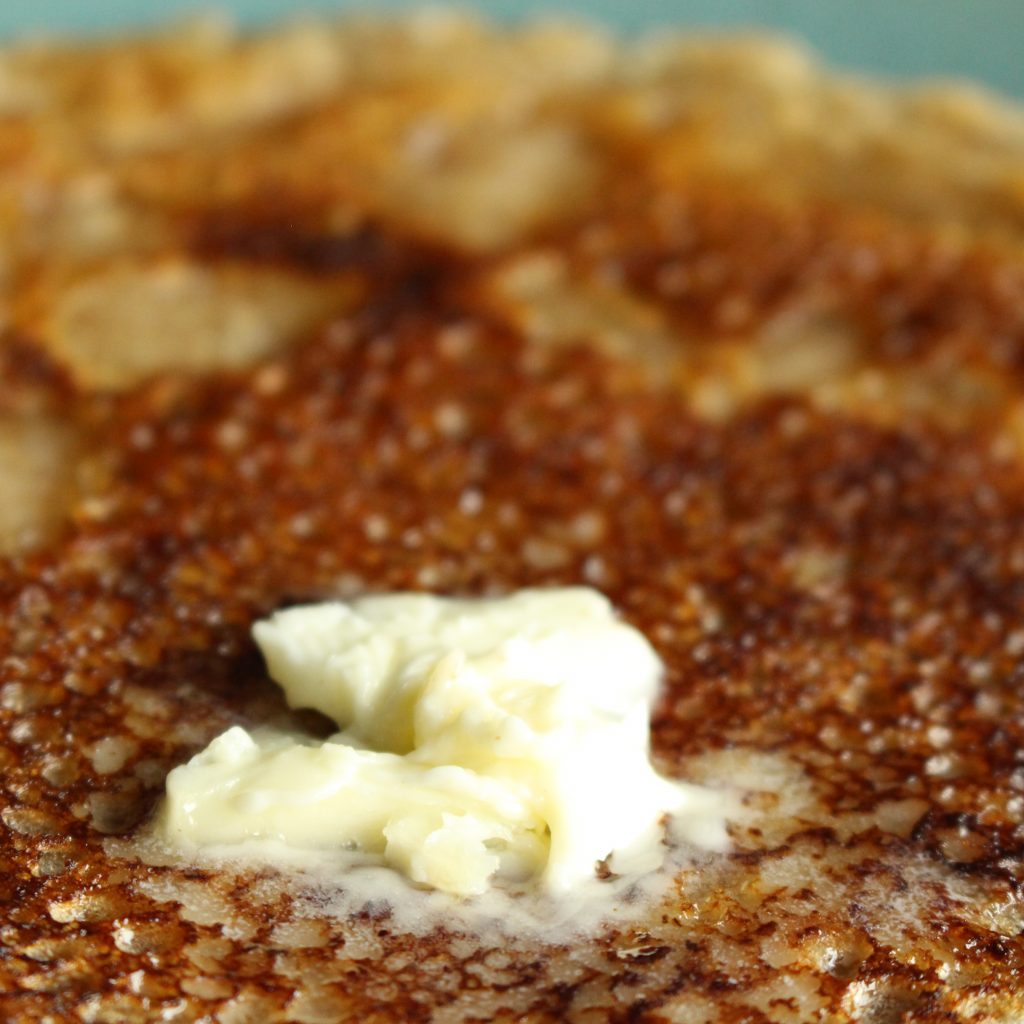
Sounds good, right?
In addition to the simple preparation and the joyful eating, sourdough pancakes can also be a tool for making the world the way we want it to be.
Who wouldn’t vote for that whilst eating well?!
Buy organic flour locally and along with the sourdough element, you’ll be looking after not only the gut biomes and digestive systems of yourself and your family, but also actively choosing to support local economy and sustainable agriculture.
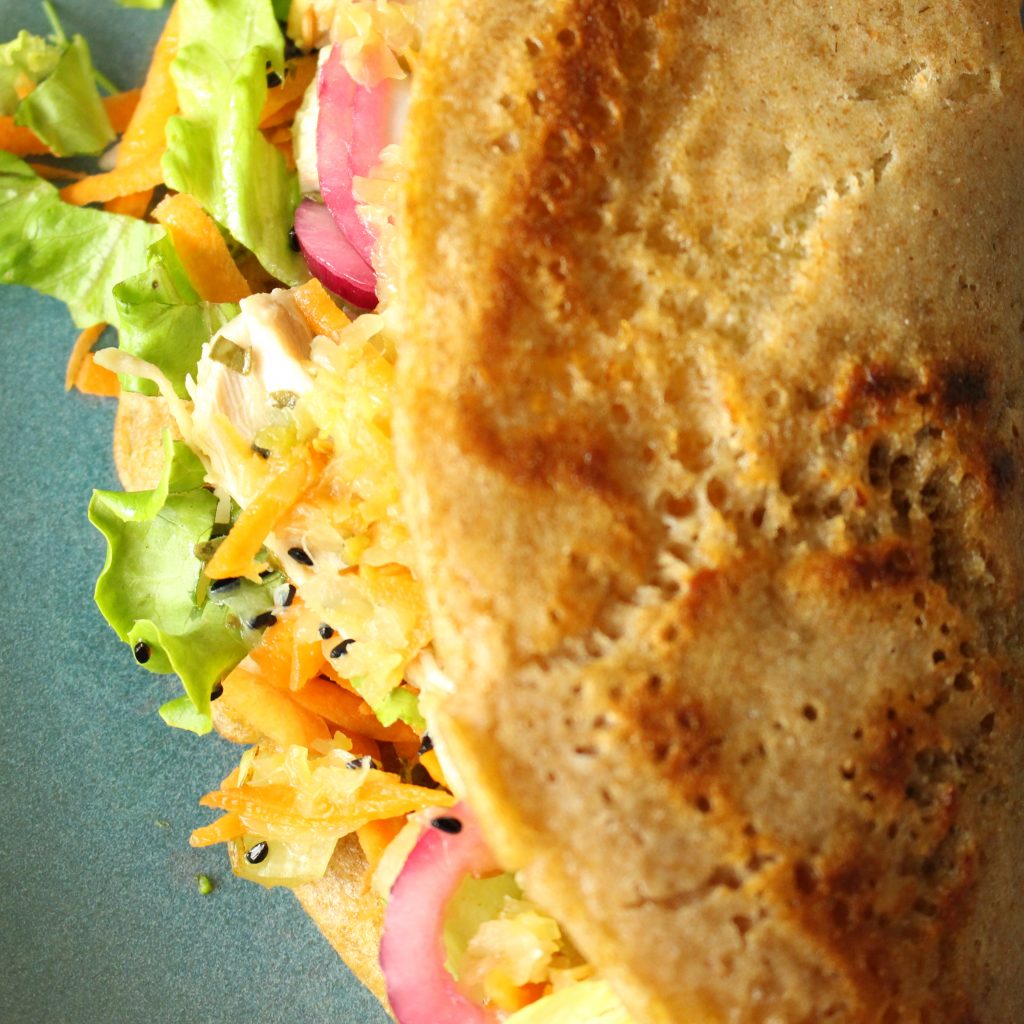
Sourdough Pancakes
Ingredients:
Essential:
Flour (I use c.200g for three 22cm pancakes)
Water
Fat (for frying)
A live starter to get the fermentation going – sourdough discard, apple cider vinegar, yogurt, kefir etc
Optional:
Salt
Batter additions, for example, herbs and spices, malt, seeds/nuts, fruit.

Let’s look at each of these ingredients:
Flour:
My go to flour for sourdough pancakes is wholegrain spelt. I use it because it’s local and I love the flavour. Use what you like, what you can buy locally, what you feel like experimenting with.
As well as using wholegrain and white spelt, I’ve used wholegrain emmer, einkorn and barley along with various ancient grain wheats. I regularly make wholegrain rye pancakes, or add a little rye into my spelt. I love the taste of buckwheat pancakes (the traditional Breton crepe flour) and also use other gluten free flours such as rice, millet and chestnut.
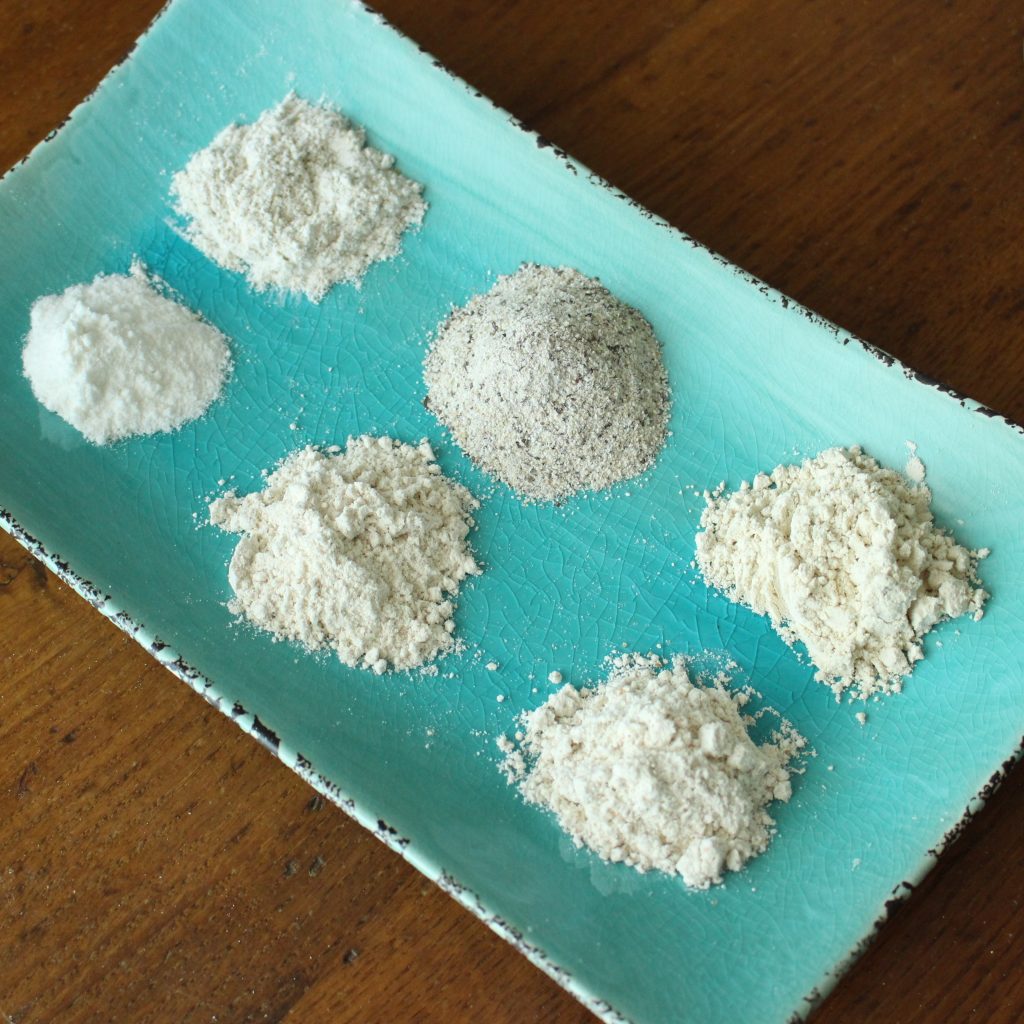
The world of flours is your oyster!
The only things to be aware of that I’ve stumbled over are as follows:
– A 100% rice or millet flour pancake will struggle to hold together without eggs. Try using half rice/millet flour and half another type.
– Barley flour has a tendency to create sticky pancakes if it is left to ferment. If you want to used more than 30% barley, add it just before you fry the pancakes for best results.
Liquid:
I always use water – making the batter as I would a sourdough bread dough, but with more liquid.
You could, however, try experimenting with any type of milk or milk kefir.
Fat:
I have fried sourdough pancakes in ghee, lard, tallow and olive oil. On occassion, I have also used coconut oil, but this tends to smoke more readily, so requires more attention.
Optional extras:
From here, any optional extras you wish you add will paint your pancakes with a different flavour.
Salt or flavoured salt is a nice addition.
Herbs can be added – rosemary, thyme and oregano work well.
Spices such as cinammon and mace help make a sweet-flavoured pancake, or coriander (whole or powdered) along with other complimentary spices such as tumeric and cumin can give you a zingy result.
Sometimes I’ll grate in some lemon zest.
Chopped onion along with nigella seeds makes a lovely savory base.
The process:
Make the batter:
When you do this depends on the time you have available and how sour you like your pancakes.
I recommend making the batter the night before and leaving it on the kitchen counter. But if you’re short on time or live in a very hot climate you could mix it up just a few hours before you want to eat.
Mix the flour and water together, with a generous blob of sourdough starter (for me, this translates to c. 30g sourdough starter per 200g of flour) until you get a smooth batter. Too runny and it will not hold together in the pan, too thick and it won’t cook well.
If you do not have a sourdough starter:
The use of a sourdough starter is not necessary to ferment your batter and make it into ‘sourdough’. If you do not have this, you can add another type of ‘starter’ to the mix; milk kefir, yogurt, ginger bug, apple cider vinegar, even sauerkraut juice!
Cooking the pancakes:
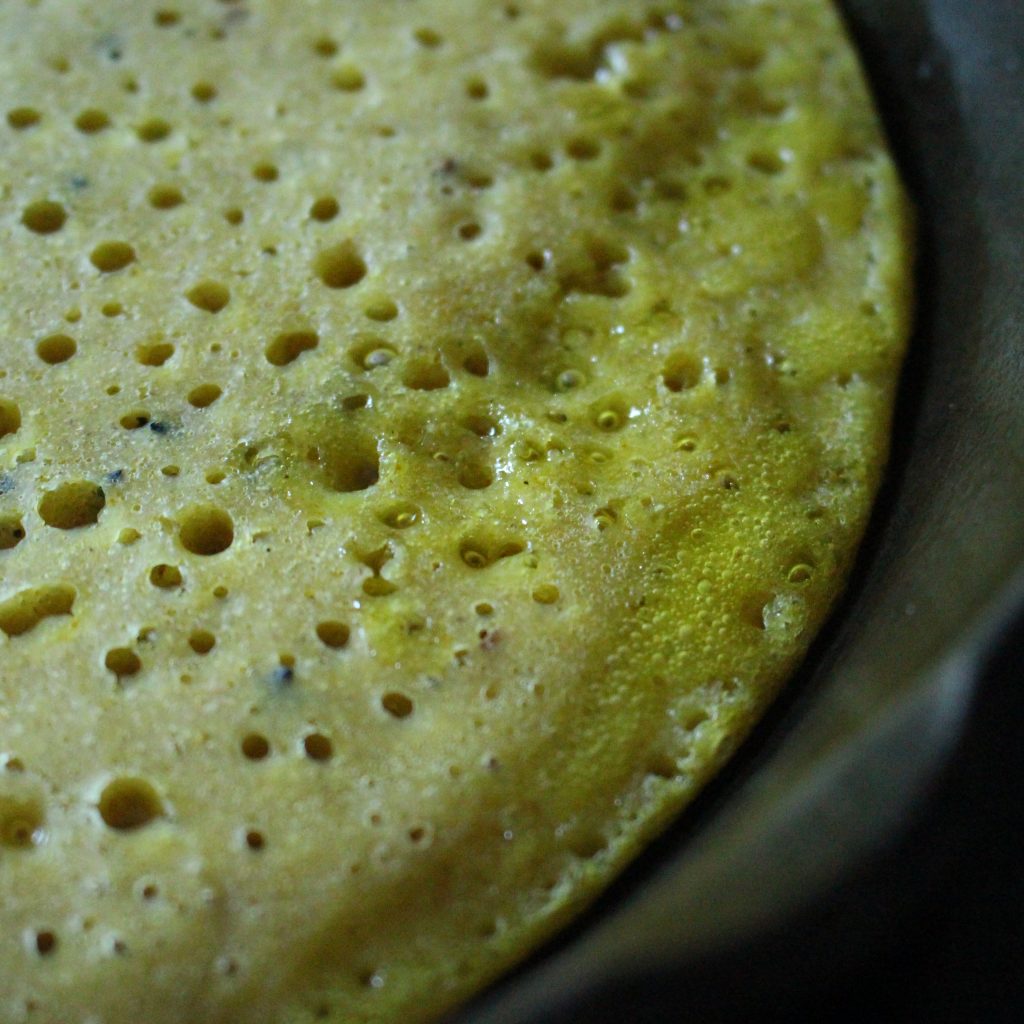
I cook in a cast iron pan.
This requires more patience and practise than non-stick. Here’s what I can pass on from my kitchen:
1/ Make sure your pan is well-seasoned.
2/ Pre-heat
Put your pan on to a medium/medium-high heat at 10-12 minutes before you are ready to cook the pancakes and leave it to thoroughly heat up. You want it as hot as possible without making the fat you are going to use smoke.
3/ Add the fat
Add a good tablespoon of fat to the hot pan, let it melt and move it around so it covers the whole base.
Do not be afraid to use a lot of fat. Fat is your friend.
4/ Spoon in the batter
For a 22cm pan, I use 2 ladles of batter. I pour this from the spoon into the centre of the pan and then I use the back of the spoon to spread the batter out.
5/ Watch and turn
When the top surface of the pancake has completely changed colour and not longer looks wet, it is ready to turn. Use a fish slice under it, detaching any sticky parts and flip.
5/ Cook until no longer soft
To be done, the pancake should be golden brown and not feel too squishy inside when you push gently on its surface. This may mean turning the pan down during the cooking process, if burning starts to be obvious. It’s fine to turn the pancake a few times.
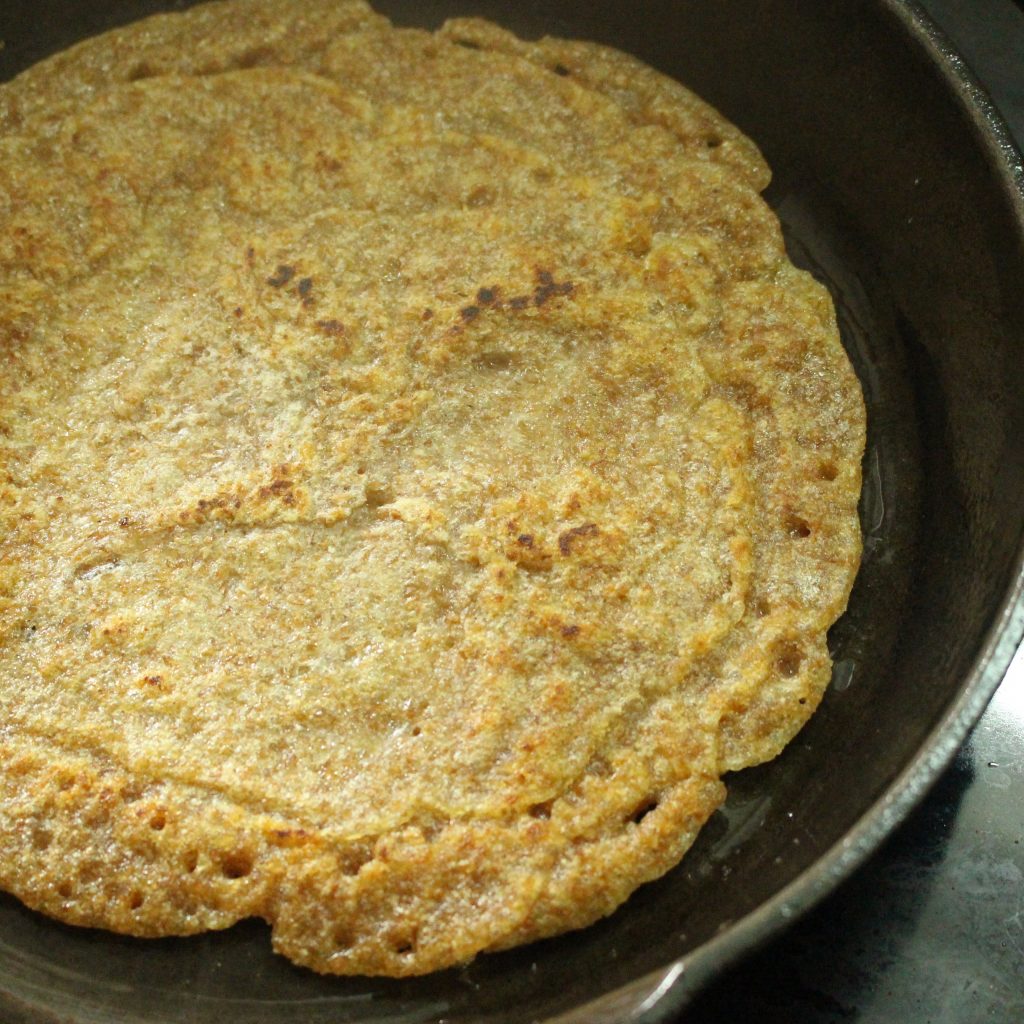
6/ Top and serve
Pancakes can be kept warm in a low oven to enable everyone to have theirs hot. If you make too many, they store well in the fridge for a day or so and can be warmed up in a pan or under the grill for a few minutes.
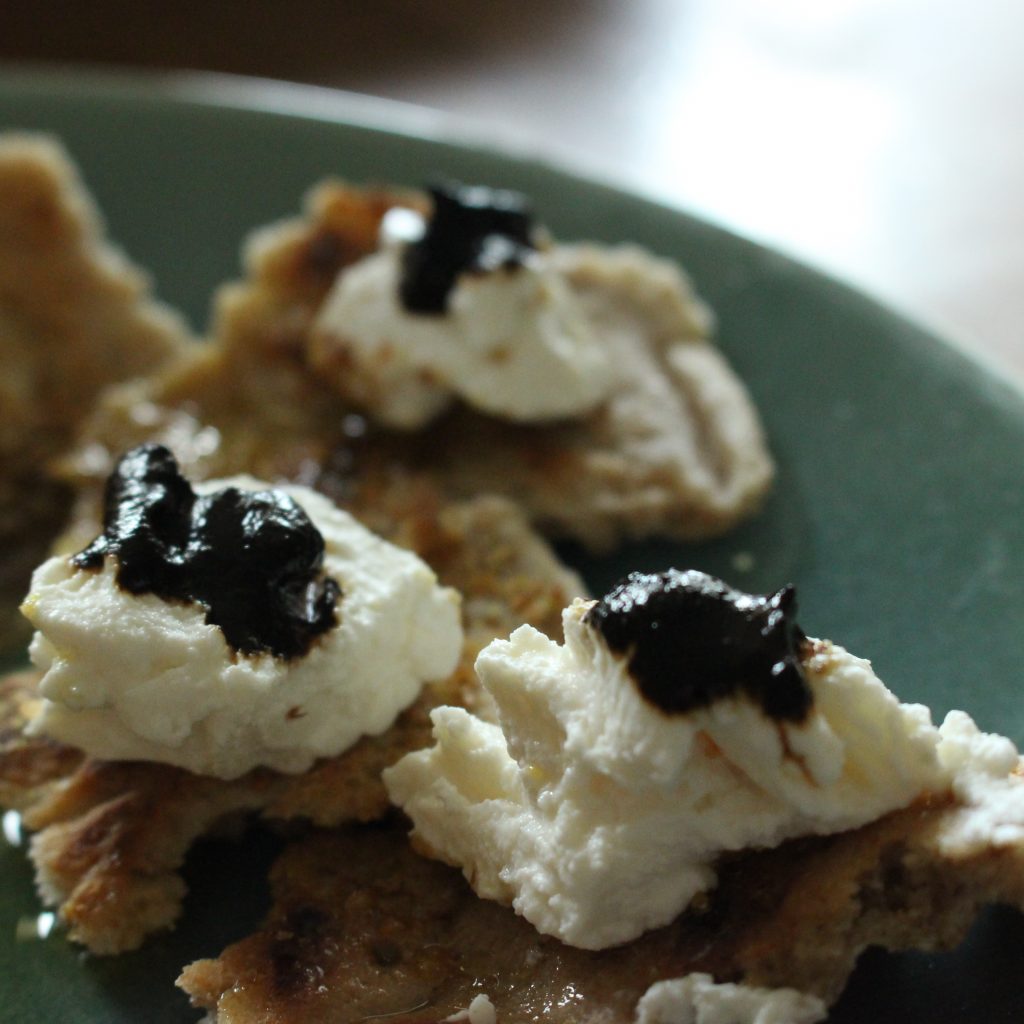
Sharing it:
I want to see and hear about your process: your ingredients and why you chose them, how you’re cooking them, the finished bread, how you eat it and who you share it with. If you’re on instagram, tag me (@ancestral_kitchen). If you don’t have instagram, please do comment at the bottom of my blog post – you can upload your pictures there too.
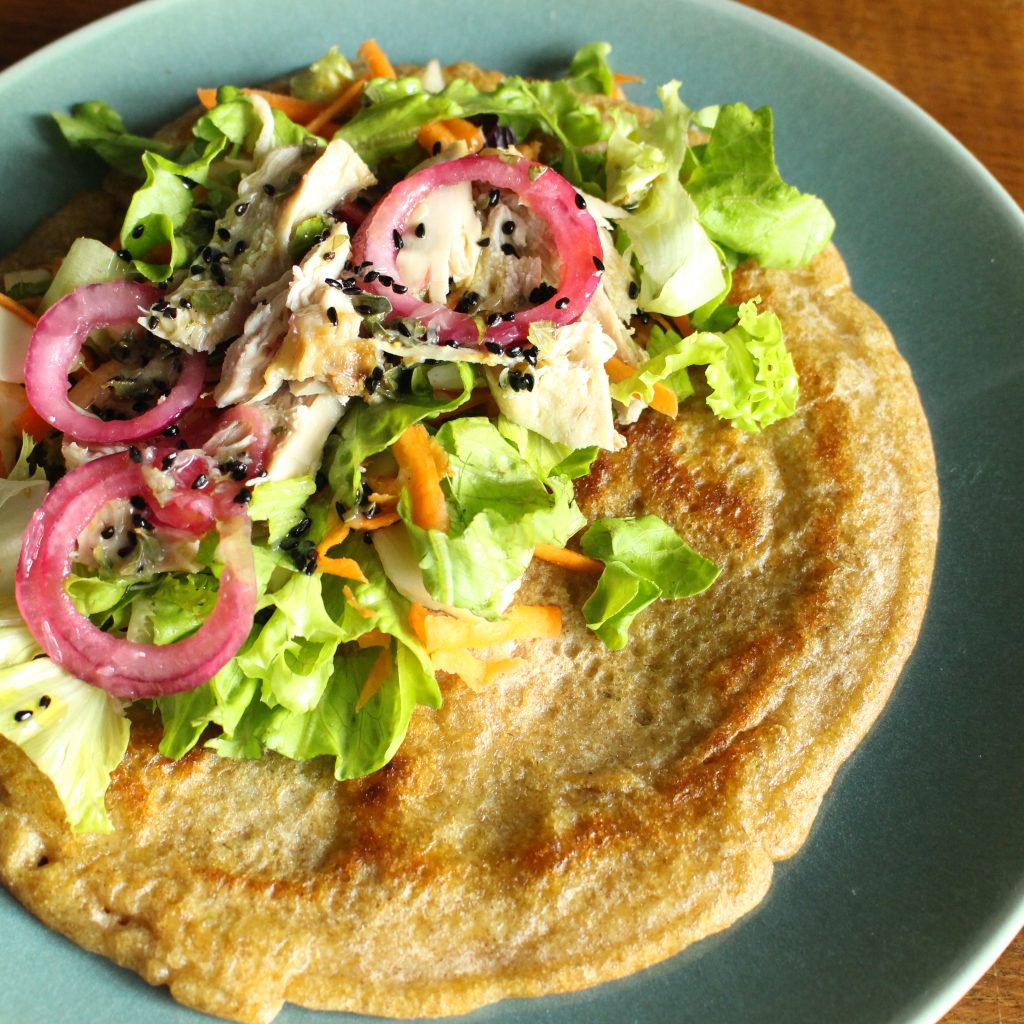

Bring ancient grain baking into your kitchen!
Download my free 30-page guide with five healthy and tasty 100% ancient grains recipes.


I’ve been making my own pancake recipe, and yours is so much simpler, and looks way better than mine! 😂 I use starter discard, spelt flour and a water/kefir mixture to make a batter and rest overnight. Then add salt, baking powder and melted butter into the batter before cooking the next day. I’m having an issue with them coming out stodgy, but they’re actually pancakey at least (before they were cardboard-like once cooked through). Sounds like I may just need to scale back my ingredients! (And cook em in a nice layer of butter Vs adding that into the batter…).
Thank you for sharing, as always!
Hi Kate, I sometimes play around with pancakes, adding other ingredients, and very often they come out stodgy. I cannot beat the simple flour, starter and water for making a delicious consistency and flavour.
We loved them, we had ours with melted cheddar cheese, homemade wild garlic pesto (olive oil-wild garlic-cashew-lemon), and sauerkraut. Delicious!
Hi Carmen. I’m glad you liked the pancakes…you are making me hungry! Alison 🙂
they are amazing, kids live them and they are so easy to digest! today we had them with blueberries, zest of lemon, cream and honey for desert 😛
I’m SO inspired!
I cannot wait to start! Next town over there is a 7-day Adventist market and bakery where I can purchase any of the fours you mentioned. I cannot wait!
I feel so blessed to find your post!
Darla
Hi Darla! What a wonderful resource you have there in the market. Let me know how you get on.